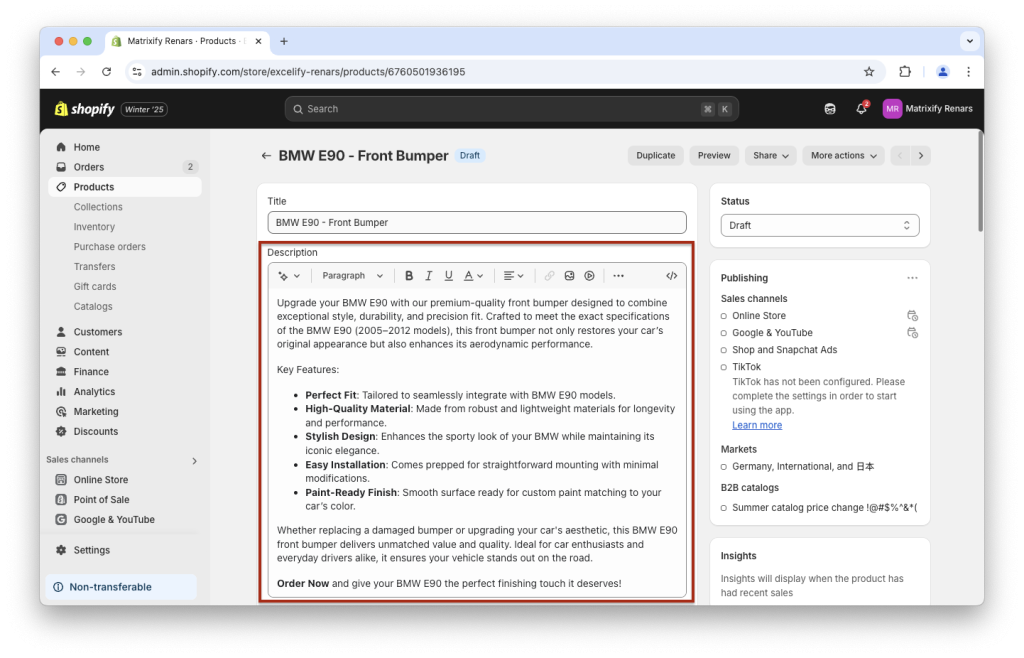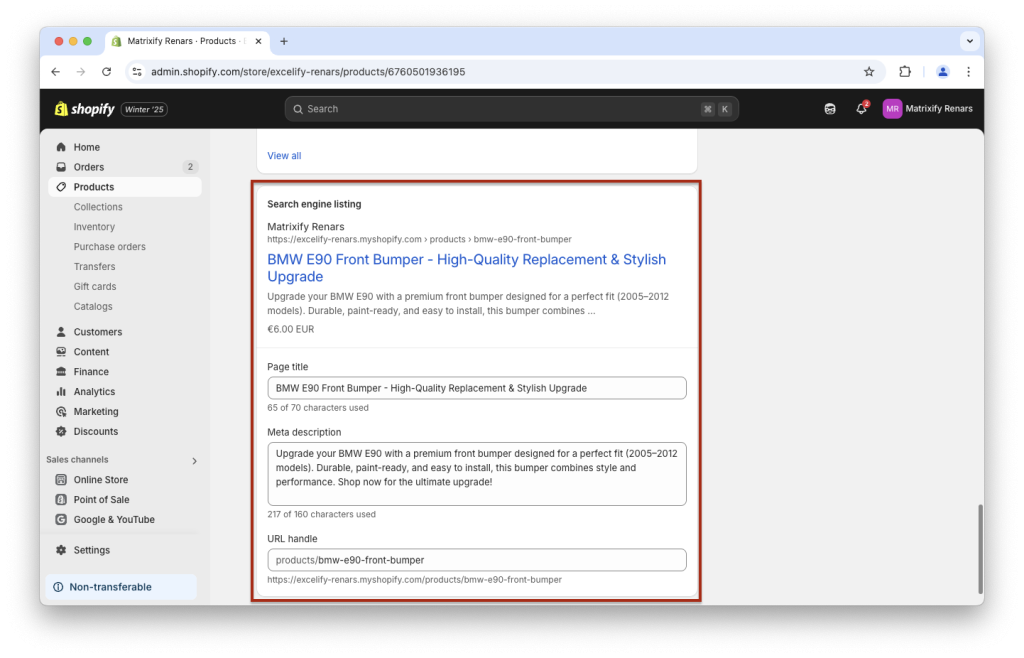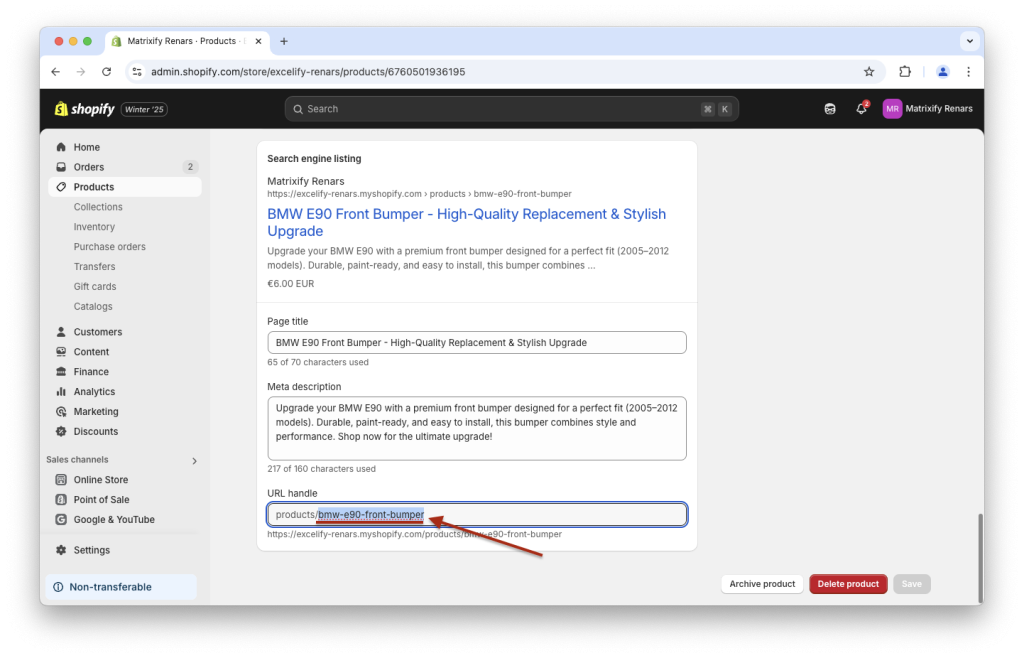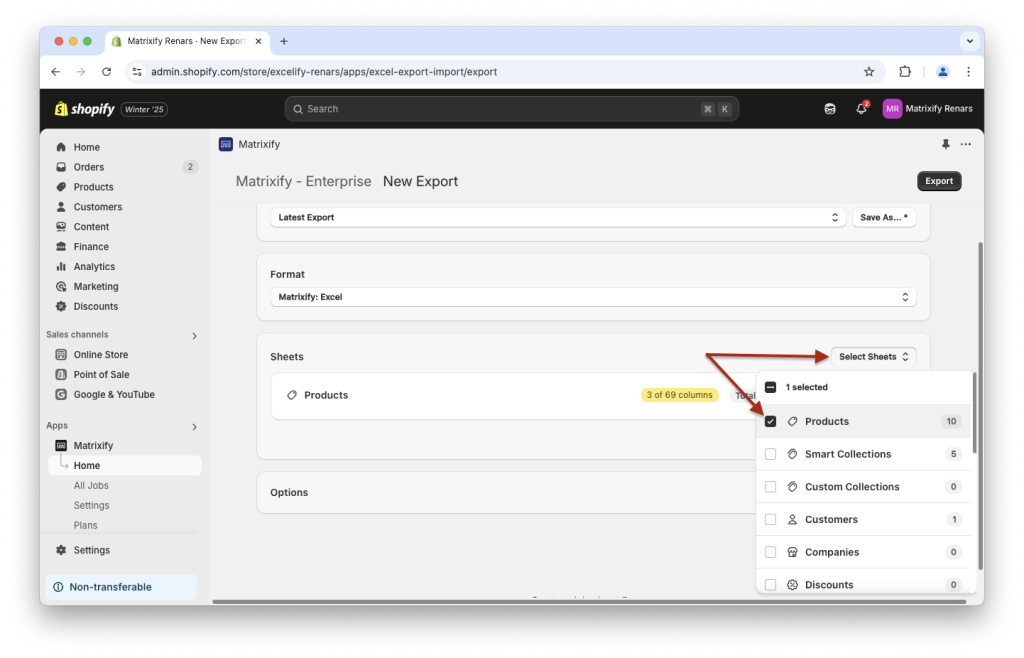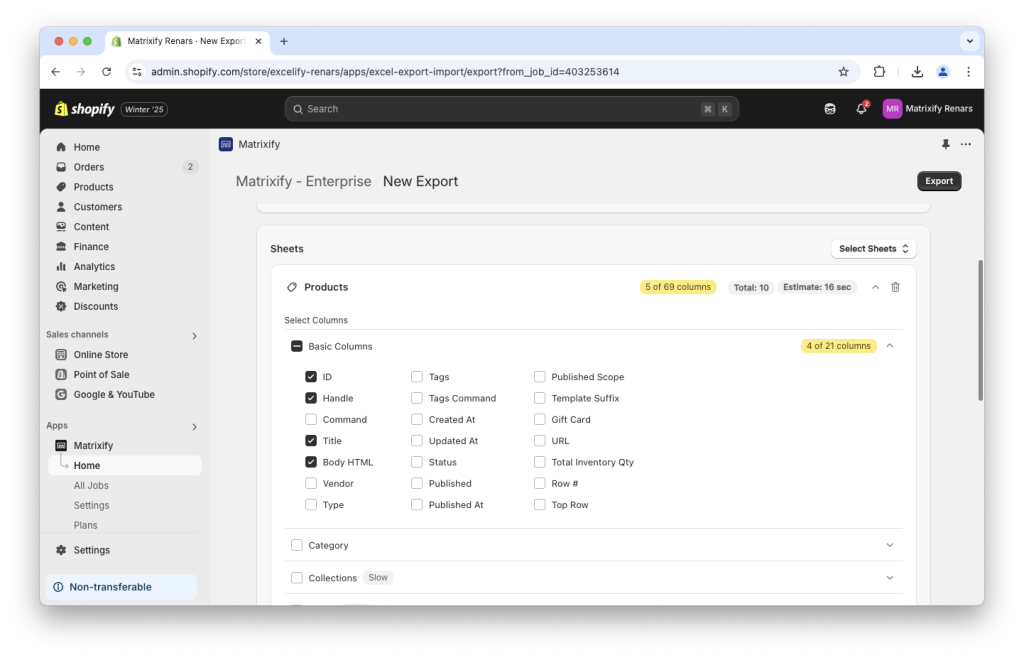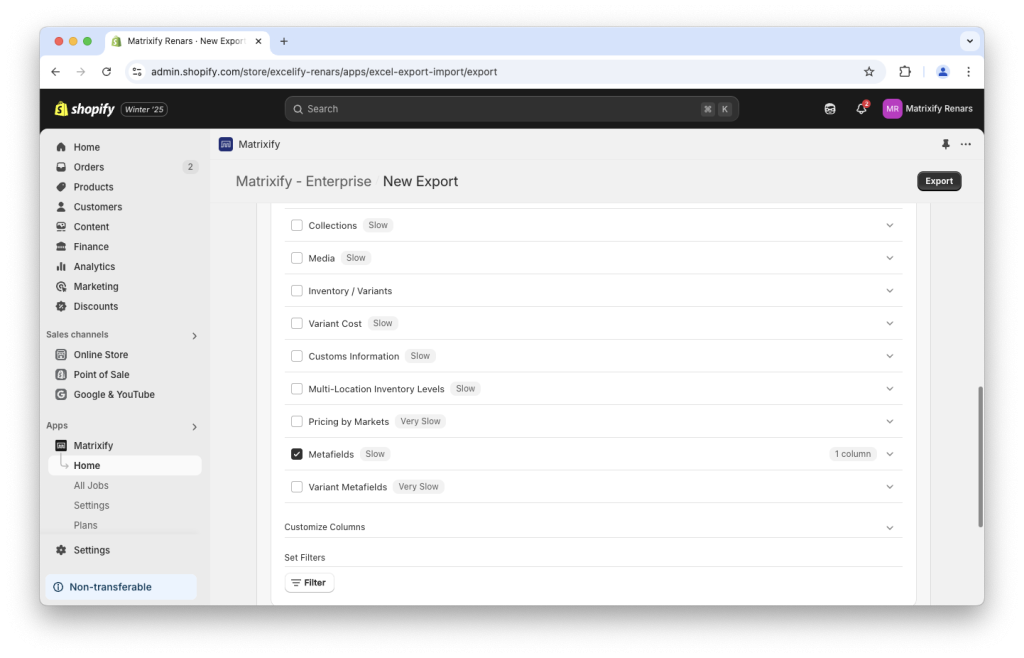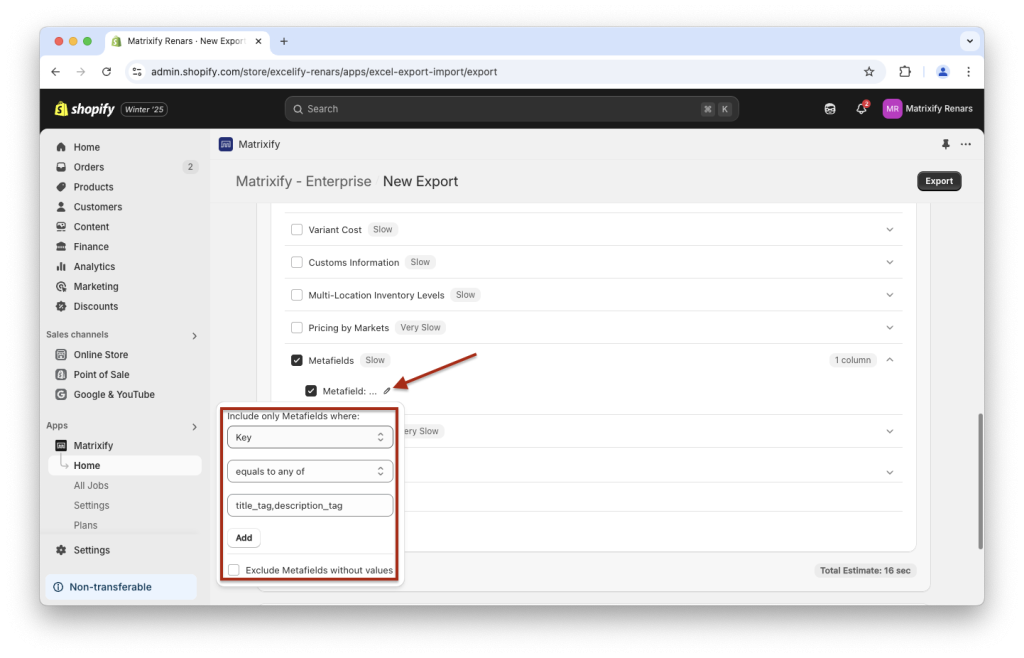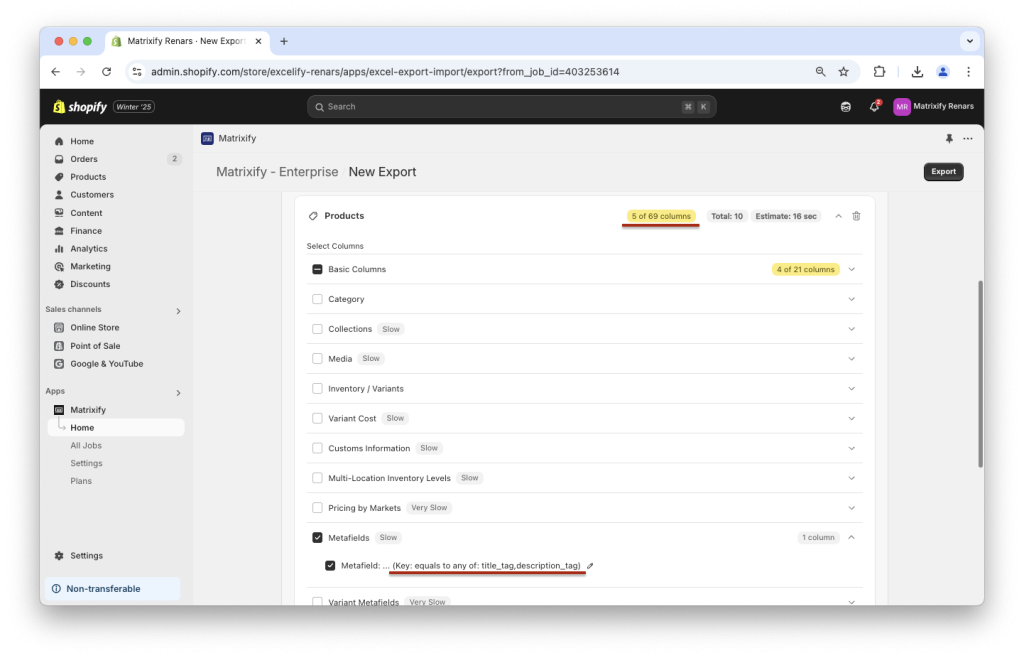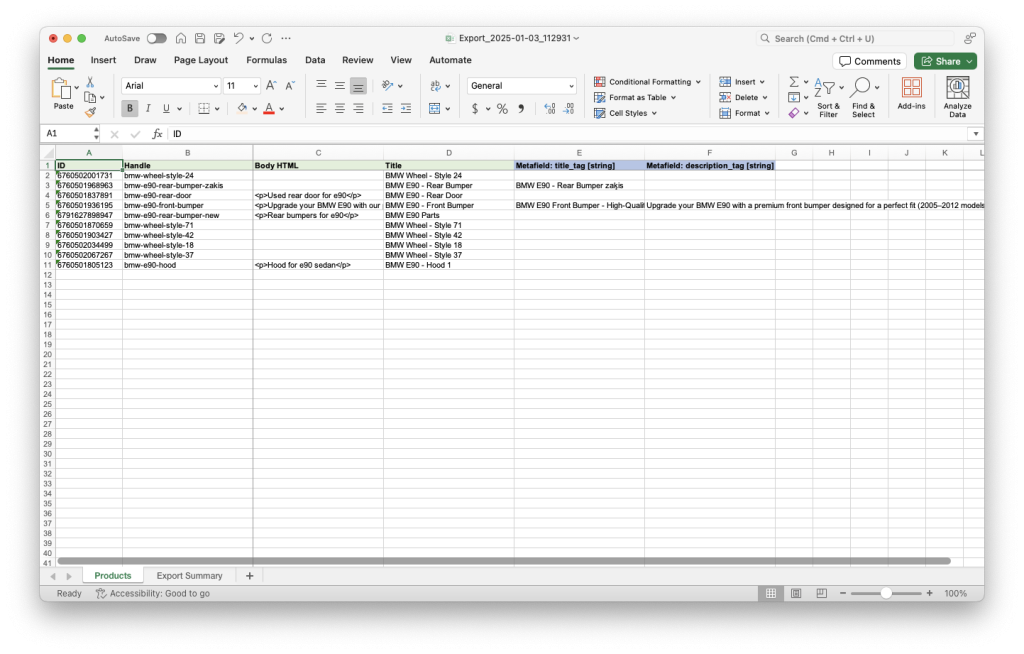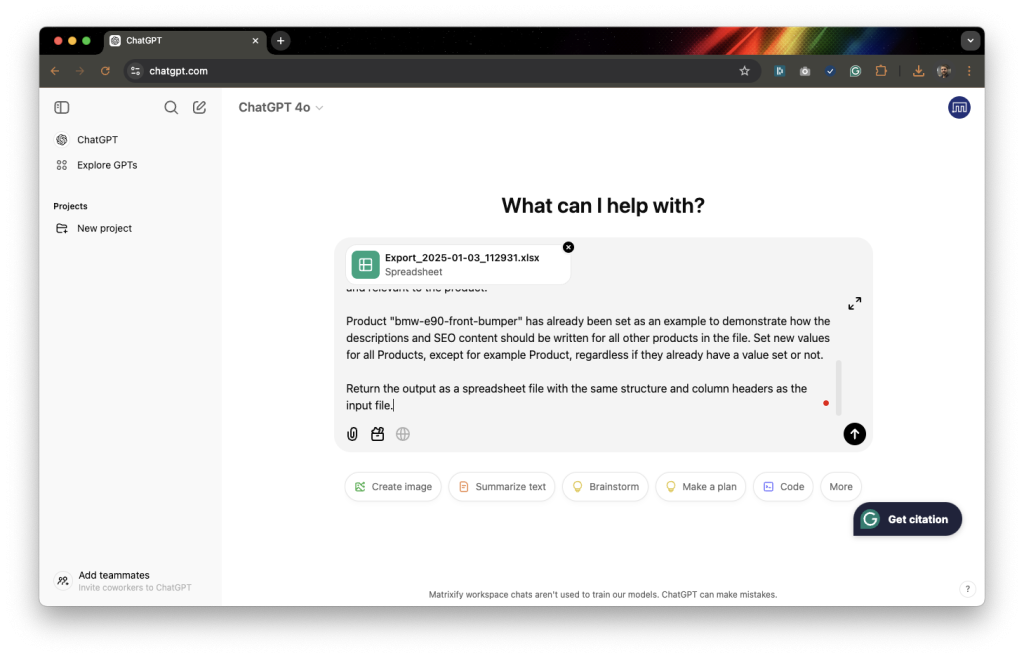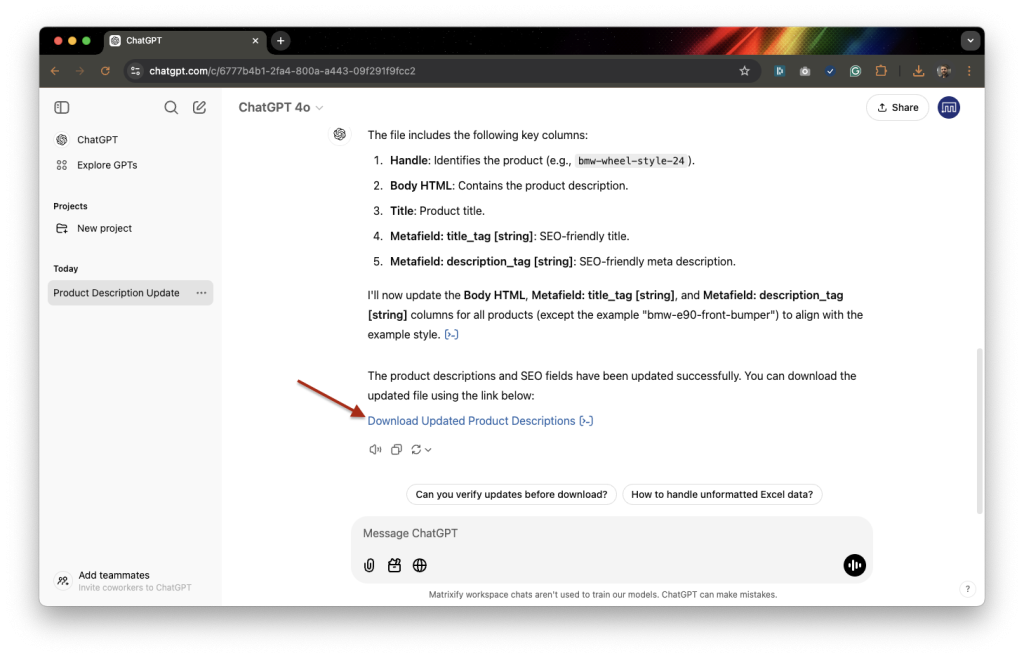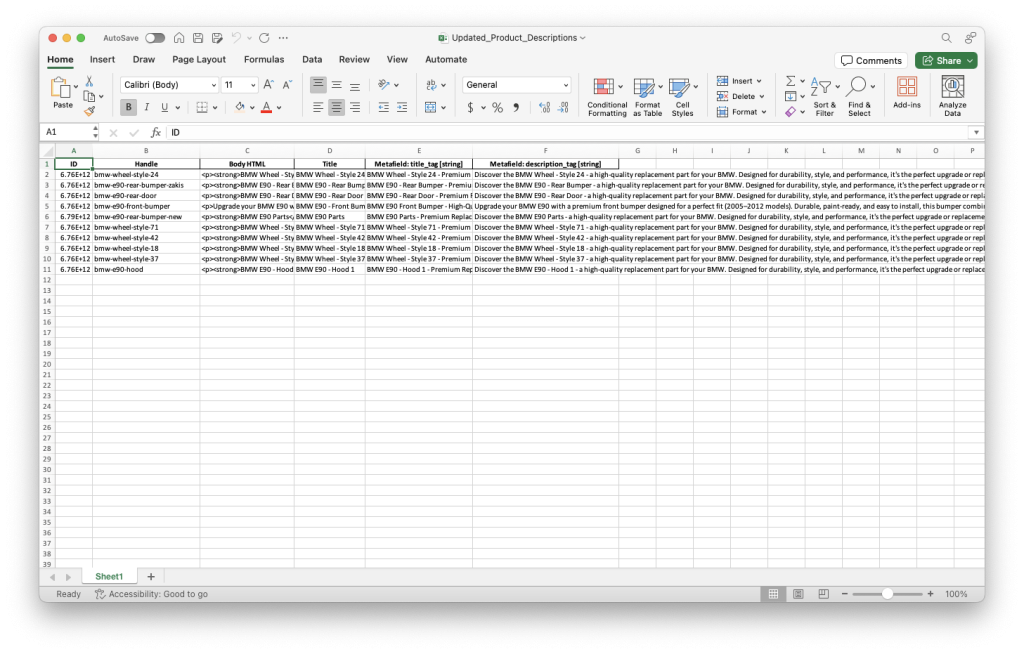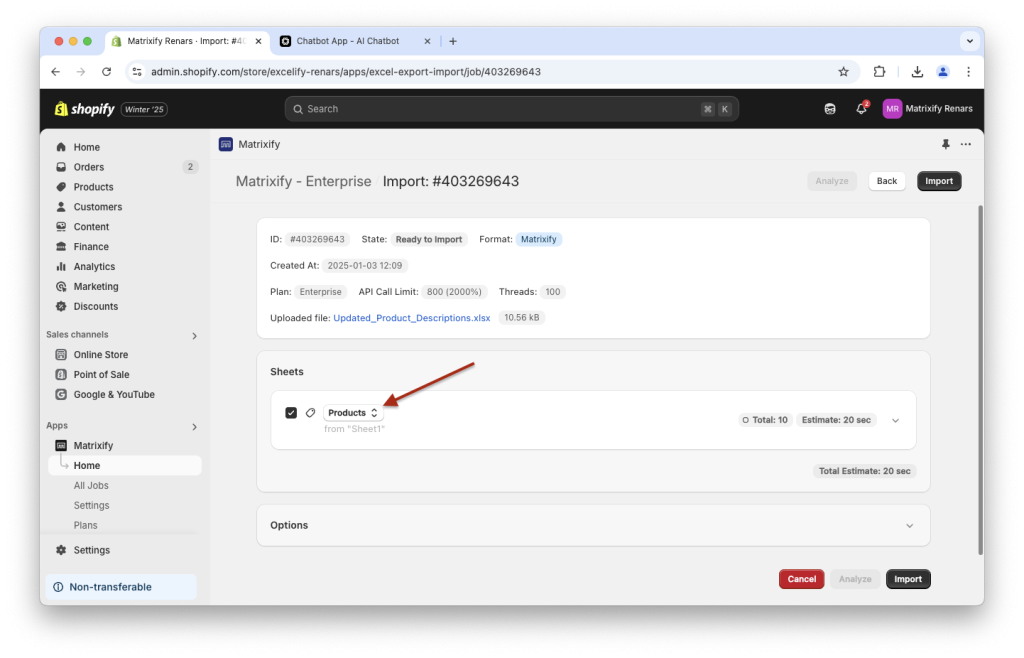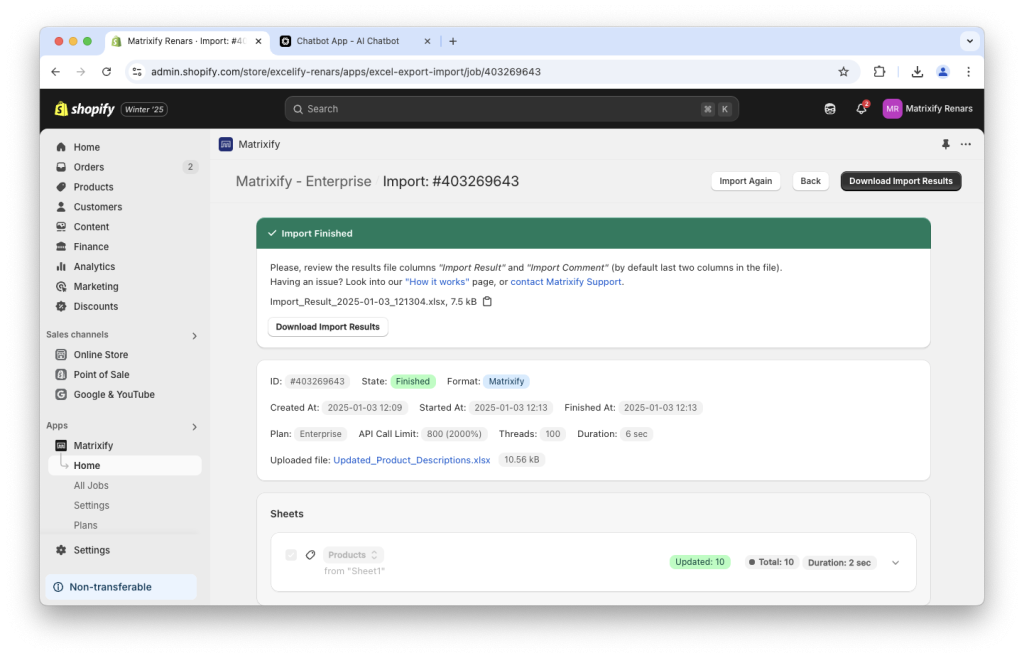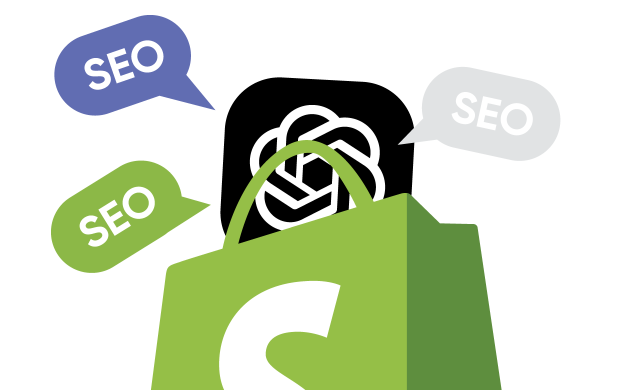
In the fast-paced world of e-commerce, crafting Product descriptions and optimizing SEO can be a daunting and time-consuming task. That’s where the powerful combination of Matrixify and ChatGPT comes in! By leveraging bulk data management capabilities of Matrixify and the advanced AI writing capabilities of ChatGPT, you can efficiently generate unique, engaging, and SEO-friendly Product descriptions for your Shopify store at scale.
Steps in short
- Add Description and SEO details for an example Product in Shopify Admin.
- Use Matrixify to export Products with ID, Handle. Title, Body HTML, and SEO Metafield columns.
- Upload the exported file to ChatGPT, fill in the AI prompt, and process the data to return a new file with AI-generated Product descriptions and SEO.
- Import the ChatGPT-generated spreadsheet file into your Shopify store with Matrixify to bulk update Products.
1. Add Description and SEO for one Product
To begin, you’ll need to set up an example Product in your Shopify Admin with a description and SEO details.
This example Product will serve as a template for generating descriptions and SEO content for the rest of your Product catalog.
Open your Shopify Admin and navigate to the “Products” section. Select or create a Product to use as an example.
Craft a detailed description that highlights key features, benefits, and any unique selling points of the Product.
Next, scroll down to the “Search engine listing” section. Here, you can edit the page SEO title and SEO description fields to include relevant keywords that improve your Products search engine results.
Once completed, save your changes to ensure the Product is ready for the next steps.
From the “Search engine listing” section copy the product “URL handle” and note/save it. The Product URL Handle is a unique and user-friendly way to identify each Product. Later in the tutorial, we will provide this Handle to the ChatGPT AI as an example Product.
2. Export Shopify Product descriptions and SEO with Matrixify
In your Shopify Admin, open the Matrixify app and create a new Export.
In the New Export page, from the “Select Sheets” dropdown, choose to export only the Products sheet.
Open the Product sheet details and select the following columns:
ID,Handle,TitleandBody HTMLfrom the “Basic Columns” group.Metafieldsfor SEO Title and SEO Description.
Configure the Metafields to export only the SEO data – expand the “Metafields” column group and click the pencil icon next to the “Metafield: …” column. Set the Metafield column selector to the following conditions:
- selector:
Key - condition:
equals to any of - value:
title_tag,description_tag
Once the Export is configured, you’ll see that the app will export 5 columns.
The configured Metafield selector should appear under the “Metafield: …” column.
You don’t need to modify any additional options or settings unless you plan to use the AI to generate other Shopify product attribute values.
If you do not need to update all Products with AI-generated details then you can apply filters to your Matrixify Export. Read more on using Matrixify Export Filters Shopify data Exports.
Click the “Export” button to start the export job. Once the process is complete, click “Download Exported File” to download and save the file to your computer.
You can open and view the exported file to see the test Product you set previously with example description and SEO values.
3. Upload the file to ChatGPT AI
To generate Product descriptions and SEO content, upload the exported file into ChatGPT. Open ChatGPT and provide the exported file as input.
In the prompt, specify that the AI should create unique and engaging Product descriptions in the Body HTML column and provide SEO-optimized titles and descriptions in the SEO Metafield columns.
Remember to also explain which product to use as an Example for the structure and tone.
For example, your prompt might look something like this:
For each product in the provided file:
– Overwrite a new product description in ‘Body HTML’ column. Highlight key features, benefits, and unique selling points in a clear, engaging, and professional tone that aligns with an e-commerce context.
– For SEO, set the ‘title_tag’ and ‘description_tag’ Metafields with concise, keyword-rich content designed to improve search engine visibility. Ensure the language is natural, appealing, and relevant to the product.
Product “bmw-e90-front-bumper” has already been set as an example to demonstrate how the descriptions and SEO content should be written for all other products in the file. Set new values for all Products, except for example Product, regardless if they already have a value set or not.
Return the output as a spreadsheet file with the same structure and column headers as the input file.
If copying the above example prompt, make sure to change the Product Handle to your own example Products Handle.
Once the prompt is ready, process the file through ChatGPT.
Review the ChatGPT returned comments and adjust the prompt if needed. Download the returned file and inspect its contents and your newly generated Product Descriptions and SEO details.
The ChatGPT returned file might have changed the formatting and sorting of the columns, but it would not matter as long as the column headers and general file structure are the same.
4. Import AI-generated SEO file into Shopify with Matrixify
To complete the process, you will need to Import the spreadsheet file with the AI-generated Product descriptions and SEO content into your Shopify store using Matrixify.
Open the Matrixify app in your Shopify Admin, navigate to the Import section, and select the newly updated file for upload.
Once the app finishes analyzing the file, make sure that the file contents are detected as “Products”, if not, then select “Products” from the drop-down and re-analyze the import job by using the “Analyze” button.
If all details in the Import job look correct then start the Import by pressing the “Import” button. You can monitor the Import progress within Matrixify, and once the upload is complete, verify that the new Product descriptions and SEO fields have been successfully applied to your store. By leveraging this method, you’ve effectively streamlined the bulk updating process, enhancing your Product catalog’s appeal and search engine optimization with AI-powered content.
Good to know
- You can use the same approach to generate and update other details for your Products, even such as bulk editing data in your file, but note that ChatGPT has various strict file size limitations for file uploads and processing.
- See other Matrixify SEO-related tutorials to bulk manage your Shopify stores’ SEO data.
- Use the Matrixify app to bulk set and update your Product SEO details.
- Read the Shopify manual on your E-Commerce store’s SEO optimization.


